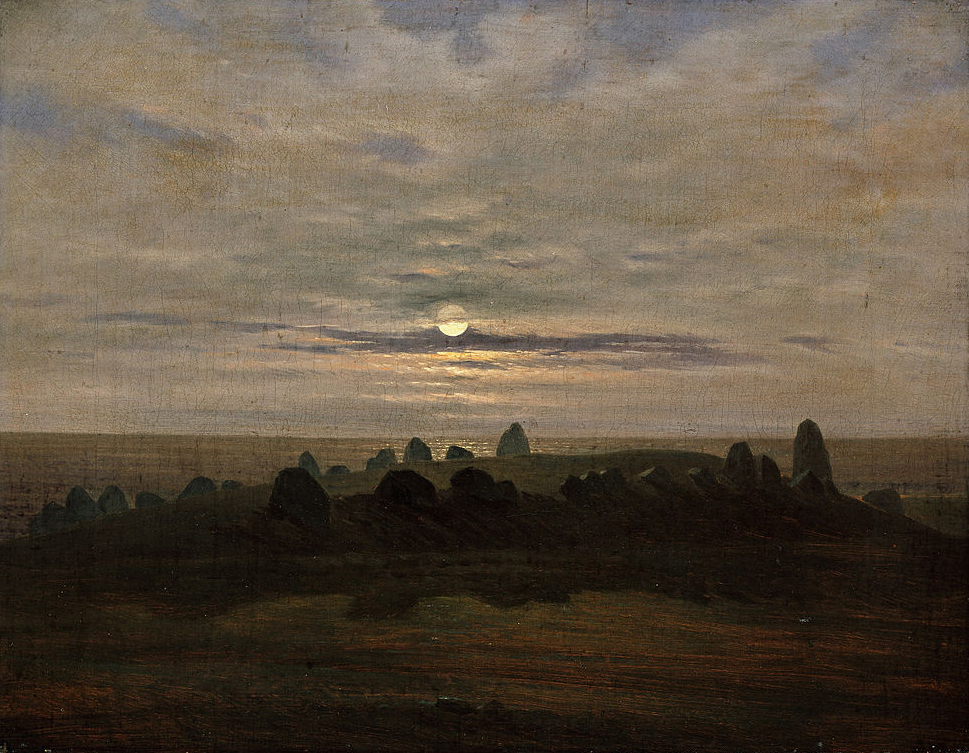When picnics are portrayed as unhappy, the contrast is purposeful. Charles McCarry’s picnic nightmare intends to provide a metaphor for the life of Paul Christopher, a Cold War CIA spy still struggling to find his mother, Lori, who was abducted by the Nazis in 1939.

Charles McCarry. The Last Supper. NY: Dutton, 1983. The cover suggests the enigma of Pau Christopher’s attempt to unravel his recurring nightmare.
Since then, Christopher has a recurring nightmare. He’s 13 years old and on the family sailboat Mahican in the Baltic Sea off the coast of the island of Rügen. In the darkness, he must search amidst the picnic wicker, plates, and thermos to feed a rabbi hiding from a man called The Dandy, who wears a Gestapo badge. As Paul looks for food, a powerful storm arises, and his mother Lori is blown out of the boat. Bravely, Paul leaps into the sea, but when he recovers her body, he notices that buttons have been sewn over her eyes.
Featured Image: Carl Gustav Carus. Stone age stronghold at Nobbin, Rügen Island (1820c.) Oil on canvas. The National Museum of Art, Architecture and Design. Carus’ landscape suggests strangeness and mystery of the island’s ambiance; thttp://www.nasjonalmuseet.no/en/visit/locations/the_national_gallery/#sthash.3RLKFN52.dpuf
See Charles McCarry. The Last Supper Picnic. NY: Dutton, 1983

